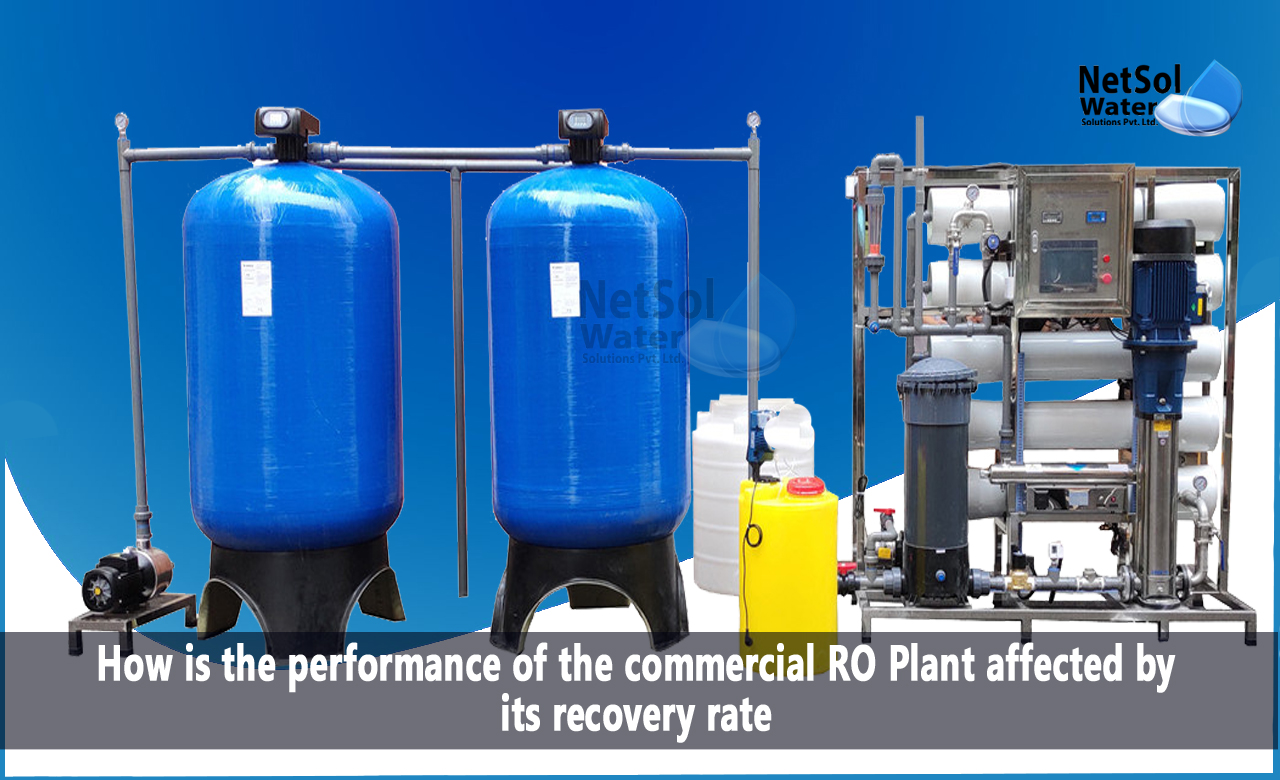The reverse osmosis (RO) technique combines separation and concentration. A semi-permeable membrane is fed with impure water under pressure, and some of the water passes through the membrane (permeate), leaving almost no pollutants in the concentrate that drains.
The RO recovery rate is the percentage of feedwater that permeates and is usually expressed as a percentage. The percent recovery is determined by increasing the proportion of "permeate flow rate" to "feed flow rate" by 100 percent.
Percentage recovery and percentage rejection are inversely related, when other variables like feed water TDS, operating pressure, and feed water temperature are held constant.
Let’s understand with an example!
For instance, membrane systems that have an 82 percent recovery rate will turn 82 percent of the whole amount of raw water input into treated permeate, while the remaining 18 percent will be discarded as concentrate (or reject).
A commercial RO plant's recovery rate affects its performance
The recovery rate is measured using flow meters that are installed in the permeate and concentrate pipework. Membrane systems should not be used outside of the range of the flow and recovery rates, for which they were intended.
Let’s understand how is the performance of the commercial RO Plant affected by its recovery rate!
1: Chemistry of feed water
The chemistry of the feed water determines how well a membrane system recovers. Ions including calcium, barium, strontium, fluorides, and sulphates as well as other low-solubility substances, like silica can be found in natural well fluids.
These substances will be concentrated during the reverse osmosis process in the concentrate stream (also known as the brine or reject stream), where their concentrations might be too high to be soluble and result in precipitation.
The highest concentration of salts is found close to the membrane's surface, an action known as polarisation. Concentrations here could be 20% greater than in the majority of the brine channel's solution. As a result, a scale may form on the membrane surface in the form of crystals.
High differential pressure, low permeate flow, and subpar permeate quality, are all characteristics of a scaled membrane. To achieve higher recovery rates without scaling, pre-treating the raw feed water with scale inhibitors or other chemicals is frequently necessary.
2: Control of flow rate
Many factors affect how quickly a membrane system recovers. However, the ratio of concentrate to permeate flow rates ultimately decides this. The interdependent characteristics are the feed pump speed (which impacts feed pressure), concentrate flow, permeate flow, and concentrate control valve position. One of these can be affected by changing its parameters without affecting the other.
Because, of their interdependence, altering the feed flow or pressure will have an impact on the concentrate flow or pressure. By adjusting the feed flow/pressure and feed pump VFD speed, the overall permeate flow may be managed. The concentration flow can be altered by moving the concentrate valve.
Conclusion
Operating flow rates and pressures should not vary significantly from day to day, because water temperature and TDS are both very steady. The three system flow controls may need to be slightly adjusted over time, to account for variations in feed temperature, feed TDS, and any membrane fouling, in order to maintain design parameters in commercial RO Plants.
How can we assist?
The reverse osmosis (RO) systems offered by Netsol Water are incredibly effective, in removing unwanted dissolved particles from tap, brackish, municipal or well water.
We are aware of how the recovery rate affects the performance of commercial RO plant, therefore, we take necessary steps to avoid the problem. With less wastewater, less energy used, higher flow rates, and contaminant rejection at competitive prices, our system is the most valuable on the market. Contact us at +91 9650608473 or send an email to enquiry@netsolwater.com for more information.



